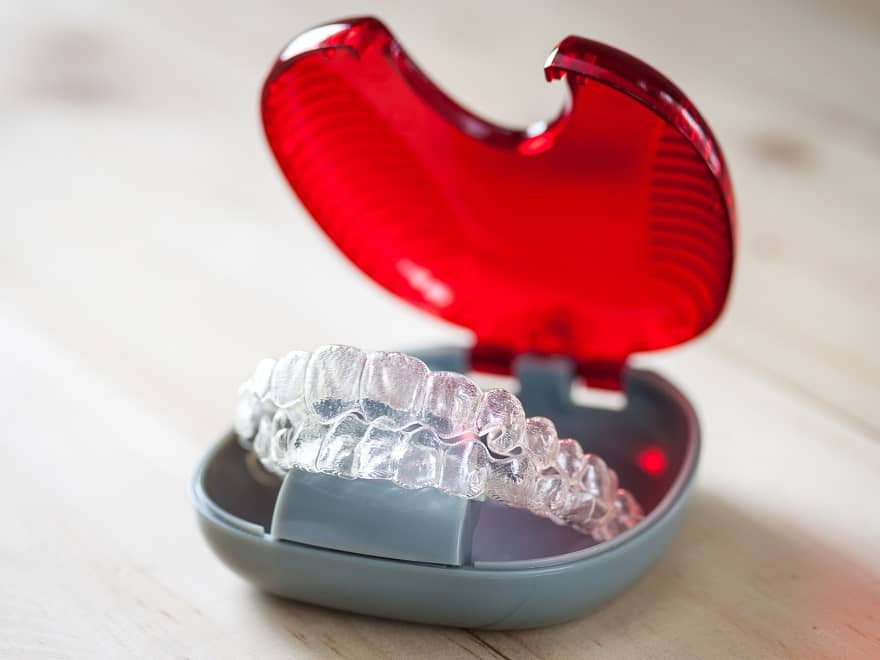Are you considering aligners for your Invisalign treatment? Teens and adults who wear braces are more aware now than ever that they may need a small adjustment during the treatment. Aligners are, therefore, good alternative options.
However, the reason you probably haven’t heard much about them is that they still come with a substantial price tag. You need to also have access to an orthodontic specialist who works as an Invisalign provider.
So, how much do Invisalign attachments cost? How much will the entire Invisalign treatment cost you, for that matter? Keep reading for a breakdown of both.
What is It for
Invisalign attachments are a type of dental attachment made to help the teeth move along the Invisalign treatment process efficiently. The attachments are placed directly onto the teeth and are made from a tooth-colored material that blends in with the teeth. They give the Invisalign aligners a better grip on the teeth and make it easier to move them along the treatment process.
The attachments can also be used to close gaps between the teeth, improve the appearance of the smile, and control the movement of the teeth in certain directions. They are a great option for people who want to improve their smile discreetly and comfortably.
How Do You Know If You Need Invisalign Attachments
Invisalign attachments are generally used for teeth that are drastically crooked and rotated. This includes teeth that have very large spaces in between them. If you have complex orthodontic problems, your orthodontist will likely suggest that you use Invisalign attachments with your aligners.
This is to increase the chances of success of the treatment. Your orthodontist can help you determine whether or not they are necessary. If they are, they may need to be adjusted periodically as your teeth move and the alignment progresses.
What Are the Types of Invisalign Attachments
There are three main types of Invisalign attachments; enamel, composite, and “power ridge.” Enamel attachments are made of a bead of material that is bonded onto the tooth by a dentist. Composite attachments are formed out of a special material similar to resin, which is also bonded onto the tooth by a dentist.
Lastly, power ridge attachments are ridges that are formed onto the aligners and are not placed onto the teeth. These are often used to provide additional force to help the teeth move more quickly during the treatment. If you want to learn more about the Invisalign procedure, visit Invisalign Cork.
What Are Its Drawbacks
One of the drawbacks of Invisalign attachments is that they can cause discomfort in the gums and mouth. It can also be difficult to keep clean. Other drawbacks include the cost of the treatment, as it is usually more expensive than regular braces.
In addition, the attachments can harm speech and eating. Furthermore, dental care can be more complex when attachments are used. Although Invisalign attachments can be an effective treatment for misaligned teeth, individuals need to be aware of the potential drawbacks before using this type of orthodontic treatment.
How Much Does It Cost
Attachments typically cost an additional $50 to $200 per attachment and vary in cost depending on the complexity of the treatment. Depending on the number of attachments needed, the costs can vary substantially. These teeth attachments usually cost less depending on the procedures and their purpose.
For example, if a patient needs several attachments on either arch, the cost can range into thousands of dollars. It is important to discuss with your dentist the number and cost of the attachments during the Invisalign consultation phase.
How Does Invisalign Procedure is Done
During the Invisalign procedure, the patient’s dentist or orthodontist will map out the patient’s predicted teeth movements. They place attachments on specific teeth to aid movement in the desired direction. The attachments are custom-made to fit the contours of the patient’s teeth.
Which in return will provide an effective bond. The attachments may be adjusted or replaced as the teeth move throughout treatment. The Invisalign procedure is not complete until any attachments or attachments are removed.
When Will My Invisalign Attachments Be Removed?
Depending on the amount of movement required and the size of the attachment, they may remain on the teeth during the entire treatment. Attachments can be removed by the orthodontist at the end of the treatment process. The attachments may be removed earlier, typically when the desired alignment has been achieved.
The plastic aligners are continuing to move the teeth into the required position. The orthodontist will be able to advise as to when the attachments should be removed and how long they should stay in place.
This is before the patient’s final aligner is fitted. the Invisalign process is quick and safe as long as you follow your dentist’s advice.
Do Invisalign Attachments Hurt?
Generally speaking, the use of Invisalign attachments doesn’t typically hurt. It can help reduce discomfort since they create a point of contact that moves teeth more evenly. The only possible complaint might be discomfort related to the slight pressure.
This also includes tension of the attachments coupled with the forces of the aligner. However, this is usually minor. If ever you feel any discomfort and pain in your teeth attachments, contact your dentist immediately.
Overall, Invisalign attachments are seen as an integral part of the Invisalign treatment process. Which can help provide greater accuracy and comfort throughout the treatment process.
Make Sure to Ask Your Dentist About Invisalign Attachments
Invisalign attachments are a great way to enhance your orthodontic treatment. Their smooth and discreet design helps them blend in with your teeth and they are highly effective in cases where additional force is required.
Keeping your oral health is important and having nice teeth can be beneficial. Ask your local orthodontist about Invisalign attachments to see if they’re the right fit for you!
If you want to read more articles, visit our blog.

